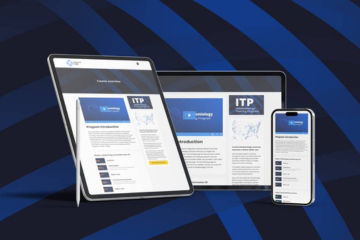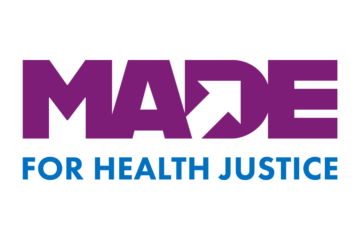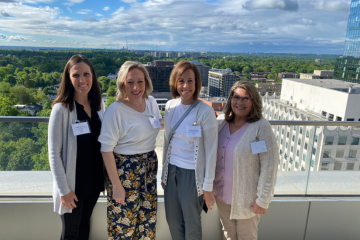
Republished from Health Affairs (March 17, 2020) with permission from the authors. See the original article on Health Affairs.
By Brian C. Castrucci and John Auerbach
Paid sick leave—or the lack of it—is getting increasing attention as the nation continues to confront the spread of COVID-19. The public recognizes, better today than we did even a couple of weeks ago, that some of the most basic steps we can take to prevent the spread of contagious disease are often out of reach for the approximately 34 million working Americans without access to paid sick leave.
For working Americans without access to paid sick leave, choosing to stay home when they are sick could mean being unable to buy food, being short on rent, or even losing their jobs. As the virus spreads to additional cities and there is an increased call for those exposed to voluntarily self-quarantine, some individuals and families will face real hardships. For people who have access to paid leave, a quarantine may be frustrating or inconvenient, but for those who lack access to paid leave, it can be financially devastating. This reality could contribute to a lack of public cooperation with quarantine orders. If we genuinely want to ensure the safety of our nation and increase the likelihood that we can successfully control the outbreak of a known or emerging contagious disease, we need a mandatory national standard for paid sick leave.
Access to paid leave is ubiquitous in some employment sectors, such as government and industries with strong unions. However, less than half of low-wage workers have access to paid sick leave, compared with 90 percent of high-wage workers. Workers without sick leave are more likely to go to work when they are ill. Less than one-fifth of food service workers have access to paid sick leave. If a restaurant worker were confirmed to have COVID-19, it would be nearly impossible to trace everyone who had contact with that worker. In our nation’s child care centers, only about a quarter of workers have access to paid sick leave. When they come to work sick, they risk exposing multiple infants and children to infection, which could spread to parents and siblings. Working parents without access to paid leave are twice as likely as parents with paid sick leave to send their children to school or daycare, thus increasing the risk of infection for other children and school employees.
While much of this information is new to many Americans, public health officials are well aware of the possible economic consequences and impact of restricted access to paid sick leave on our nation’s ability to respond to a disease outbreak. The experience of five families in Kansas City, Missouri, during a 2014 measles quarantine provides an example of what happens when people are quarantined without paid sick leave. These families were unable to work, so they missed paychecks and didn’t have the necessary income to buy food, pay for utilities, or cover their rent.
In its recent report, “Ready or Not: Protecting the Public’s Health from Diseases, Disasters and Bioterrorism,” Trust for America’s Health found that between 45 percent and 68 percent of the workforce has access to paid leave (inclusive of sick leave, vacations, and holidays), depending on the state where they work. Recognizing the overwhelming evidence on the benefits that paid sick leave has for both employers and employees—increased productivity, reduced turnover, and reductions in health care costs—an increasing number of states and cities are mandating minimum requirements for paid sick leave. But these state and local laws create a loosely stitched tapestry that fails to provide the necessary protections nationwide.
Ignoring this gap in the nation’s readiness to control contagious disease would be negligent and potentially threatening to our national security. With the number of cases of COVID-19 increasing in the United States, momentum for federal paid sick leave legislation is growing. Representative Rosa DeLauro (D-CT) and Senator Patty Murray (D-WA) reintroduced the Healthy Families Act on March 6, and White House advisers are reportedly considering paid sick leave as a potential remedy to the expected economic turmoil resulting from the COVID-19 outbreak. With growing momentum for federal paid sick leave legislation, we need to carefully consider the details.
Simply requiring paid sick leave may not be enough. We also must consider the conditions under which sick leave can be used (for example, to care for a sick family member or domestic violence recovery), the number of minimum required hours, and whether it covers all employers or only a specific subset. The Healthy Families Act requires employers to provide at least 56 hours of paid sick leave annually. But it exempts those with fewer than 15 employees, thus leaving approximately 15 million US workers without guaranteed access to the benefit. There are currently five US cities that require employers of all sizes to provide at least 48 hours of paid annual sick leave, which ensures access for all employees.
National paid sick leave should be a critical component of our country’s strategy to fight contagious diseases. National paid sick leave legislation would strengthen our nation’s ability to respond to outbreaks of common infectious diseases and to other significant threats to population health that could emerge in the future. While we encourage Congress and the president to act quickly, we also urge them to respond thoughtfully and enact paid sick leave legislation that provides more than just a temporary solution to this long-held problem.




